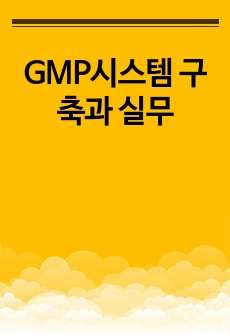연구자료 291 (생물학적 악취처리) 미기상환경의 생물학적 악취제거기술 개발
*오*
다운로드
장바구니
목차
1. 미기상환경오염과 악취제거2. 바이오-필터의 악취제거 기술
3. 바이오-살수여상의 악 취제거 기술
4. 바이오-세정여상의 악취제거 기술
5. 미래지향적 바이오-막 악취제거 기 술
6. 결론
7. 참고문헌
8. 기술보문
본문내용
[요론]라디오와 TV에서는 미인의 기상 캐스터가 날이면 날마다 황사와 미세먼지 보도를 하고 있다. 또한 중국에서 월경해 오는 대기환경의 미세먼지를 기상학적인 기상환경의 과제 로 보고서, 한국의 미기상 환경에서 잔류하는 미세먼지의 83%가 중국 근원의 박테리아 를 함유하고 있다고 보도(2017.8.27.12:00 MBC 뉴스) 하고 있으며, 그 미세먼지와 세균 에 대비해 철저하게 마스크를 하는 이는 그 취기를 미세하나마 느끼면서, 중국의 레스 토랑과 각종 산업체 등에서 처리 제거하지 않은 박테리아와 취기물질로 인식하고 있다. 중국 황해 연안 산업단지의 발산물이 그 미세먼지와 세균에 비말동반(entrainment)해 다 량으로 월경해 올 날도 머지않다고 예상할 수 있다.
특히 중국의 닭울음소리가 들린다는 가거도(소흑산도)에서는 월경해 오는 미세먼지와 취기물질에 대해 그 제거를 요구해야 하는 시간이 머지않다고 할 수 있으므로, 대규모 적인 처리가 가능한 생물학적인 악취제거기술을 제공하면서 그 악취제거를 요구해야 한 다. 그러나 대기환경적으로는 이미 그 대처에 한계성을 가지고 있어, 기상학적으로 기 상환경적으로 그 대안과 솔루션을 모색하지 아니할 수 없으므로, 기상 정보의 하나로 생물학적 악취제거 부문을 포함시켜 연구조사해 나가야 것이 적절하다고 생각하여, 그 일환으로 미기상환경 보전과 생물학적 악취제거 기술을 논급하기로 한다.
[keywords: 바이오반응기, 바이오여과, 바이오세정여상, 바이오막탈취, 바이오필터, 바이오스크러버, 바이오살수여상, 바이오필름]
1. 미기상환경오염과 악취제거
기상환경과 미기상환경 및 대기환경에서 인류와 환경 및 생태를 가장 괴롭히고 성가시 게 하는 것이 악취(odor)와 취기(mal-odor) 및 냄새(smell), 구린내(tink・stench)라고 할 수 있다. 도시사회에서는 악취로 인한 형사소송・민사소송・행정소송 등의 법적 다툼도 잦고, 신체적 위해사건으로 발전하기도 한다.
참고 자료
Bindra N., et al., 2015. “Technological and life cycle assessment of organics processing odour control technologies”, Sci. Total Environ., 527/528, 2015. pp.401~412.Volckaert D., et al., 2016. “SIFT-MS analysis of the removal of dimethyl sulphide, n-hexane and toluene from waste air by a two phase partitioning bioreactor”, Chem. Eng. J., 290, 2015, pp.346~352.
Loriato A., et al., “Odour – a vision on the existing regulation”, Chem. Eng. Trans., 30, 2012, pp.25~30.
Kraakman N.J.R., et al., “Evaluating odour control technologies using reliability and sustainability criteria- a case study for water treatment plants”, Water Sci. Technol., 69, 2014, pp.1426~1433.
Giungato P., et al., “Improving recognition of odors in a waste management plant by using electronic noses with different technologies, gas chromatography - mass spectrometry /olfactometry and dynamic olfactometry”, J. Clean. Prod., 133, 2016, pp.1395~1402.
Ben Jaber M., et al., “Impact of nutrients supply and pH changes on the elimination of hydrogen sulfide, dimethyl disulfide and ethanethiol by biofiltration”, Chem. Eng. J., 258, 2014, pp.420~426.
Cheng Y., et al., “Challenges and solutions for biofiltration of hydrophobic volatile organic compounds”, Biotechnol. Adv., 34, 2016, pp.1091~1102.
Chouar R., et al., “Microbial analysis and efficiency of biofiltration packing systems for hydrogen sulfide removal from wastewater off gas”, Environ. Eng. Sci., 32(2), 2015, pp.121 ~128.
Delhomenie, M.C., Heitz, M., 2005. “Biofiltration of air: a review” Crit. Rev. Biotechnol., 25, 2005, pp.53~72.
Flores-Valle S.O., et al., “A comparative study of physical and chemical processes for removal of biomass in biofilters”, Molecules, 16, 2011, pp.6927~6949.
Kafle G.K., et al., “Field evaluation of wood bark-based down-flow biofilters for mitigation of odor, ammonia, and hydrogen sulfide emissions from confined swine nursery barns”, J. Environ. Manag., 147, 2015, pp.164~174.
Zehraoui A., Hassan A.A., Sorial G.A., “Biological treatment of n-hexane and methanol in trickle bed air biofilters under acidic conditions”, Biochem. Eng. J., 77, 2013, pp.129~135
Kasperczyk D., Urbaniec K., “Application of a compact trickle-bed bioreactor to the biodegradation of pollutants from the ventillation air in a copper-ore mine”, J. Clean. Prod.. 87, 2015, pp.971~976.
Ahmed W., et al., “Dynamic modeling and analysis of biotrickling filters in continuous operation for H2S removal”, Clean. Technol. Environ., 16(8), 2014, pp.1757~1765.
Hernandez J., et al., 2017. “Characterization and evaluation of poplar and pine wood in twin biotrickling filters treating a mixture of NH3, H2S, butyric acid, and ethylmercaptan”, Environ. Prog. Sustain. Energy, 36, 2017, pp.171~179.
Liu C., et al., “Removal of H2S by co-immobilized bacteria and fungi biocatalysts in a bio-trickling filter”, Process Saf. Environ., 91, 2013, pp.145~152.
Yang C.P., et al., “Performance of biotrickling filters packed with structured or cubic polyurethane sponges for VOC removal”, J. Environ. Sci., 23, 2011, pp.1325~1333.
Malhautier L., Lalanne F., Fanlo J.-L., “Bioscrubbing as a treatment for a complex mixture of volatile organic compounds: influence of the absorption column characteristics on performance”, Can. J. Civ. Eng., 36, 2009, pp.1926~1934.
Nisola G.M., et al., “NH3 gas absorption and bio-oxidation in a single bioscrubber system”, Process Biochem. 44(2), 2009, pp.161~167.
Potivichayanon S., et al., “Hydrogen sulfide removal by a novel fixed-film bioscrubber system”, Process Biochem., 41(3), 2006, pp.708~715.
Santos A., et al.,, “Conversion of chemical scrubbers to biotrickling filters for VOCs and H2S treatment at low contact times”, Appl. Microbiol. Biotechnol., 99, 2015, pp.67~76.
Alfonsín C., et al., “Selection of odour removal technologies in wastewater treatment plants: a guideline based on Life Cycle Assessment”, J. Environ. Manag., 149, 2015, pp.77~84.
Estrada J.M., et al., “A comparative analysis of odour treatment technologies in waste -water treatment plants”, Environ. Sci. Technol., 45, 2011, pp.1100~1106.
Fitch, M., Neeman, J., England, E., “Mass transfer and benzene removal from air using latex rubber tubing and a hollow-fiber membrane module”, Appl. Biochem. Biotechnol., 104, 2003, pp.199~214.
Kumar A., Dewulf J., Langenhove H.V., “Membrane-based biological waste gas treatment”, Chem. Eng. J., 136, 2008, pp.82~91.
Lebrero, R., et al., “Comparative assessment of a biofilter, a biotrickling filter and a hollow fiber membrane bioreactor for odor treatment in wastewater treatment plants”, Water Res., 49, 2014, pp.339~350.
Krzysztof Barbusinski, et al., “Biological methods for odor treatment - A review”, Journal of Cleaner Production, 152, 2017, pp.223~241






















